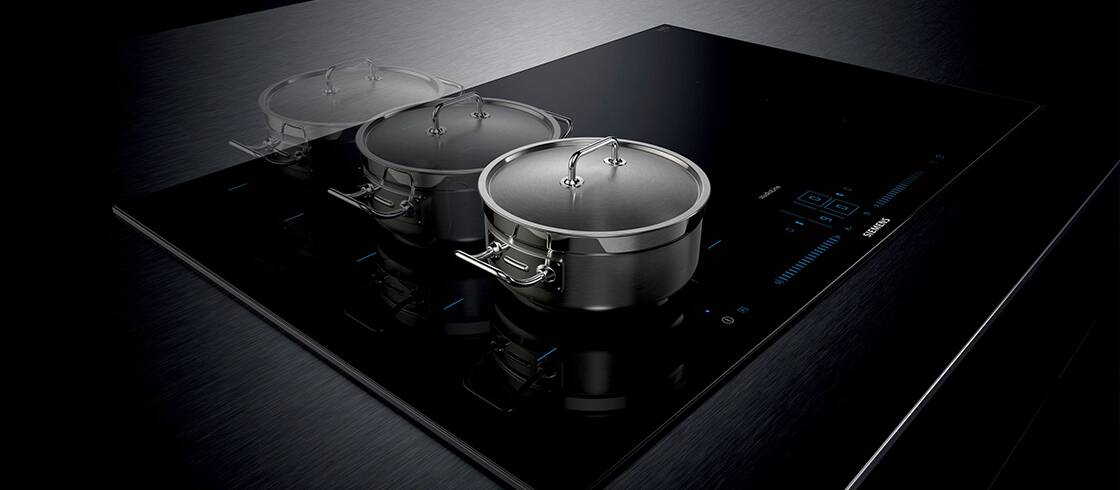With the activeLight cooktop, Siemens is presenting a product at this year’s IFA that is helping to shape this trend. When switched off, the 80-cm ceramic cooktop blends into the countertop, since its surface features no predefined cooking zones, no control panel, and no raster. The cooktop with varioInduction Plus only comes to life when you start cooking, using smart blue light bars to show the required cooking zones – not just at the edge of the cooktop, but, for the first time, also along the entire outer edge of the cooking zone. “The light bars on the cooktop are not just a visual highlight, but also provide real added value for our consumers,” says Gregor Schneider, whose task as subproject manager was to ensure that all user and consumer needs were taken into account. Irrespective of their size and shape, the automatic zone selection feature detects the position of the pots and pans instantly and marks the area. That way, the cook can see whether the cookware is positioned correctly and where the induction is active. “On dark induction surfaces, this kind of transparency wasn’t possible in the past.”
How does it work?
The light indicators are based on a permanent detection system. This works with the help of sensors integrated in each of the ten varioInductors in the four cooking zones. The inductors emit minimal and completely harmless current impulses. When a pot on the cooking zone absorbs the current, a magnetic field is produced, which tells the sensor where the pot is located so that it can activate the right LEDs. “This happens not only within the first 30 seconds of the cooktop being switched on, but continuously,” explains Schneider. At the same time, the sensors detect how many inductors are covered by the cookware in order to activate the matching cooking zones and pass on this information to the touch display. The sensors were first integrated into cooktops back in 2015 and were “simply” reprogrammed for this smart application. The real difficulty lay in finding a translucent, dark glass surface and heat-resistant, durable LEDs. Following intensive tests, the team found what it needed at Schott and Osram. “Since we wanted to install the LEDs directly under the glass and not between the inductors, we added another layer to the cooktop, much like making a sandwich,” is how Schneider describes the solution to this technical challenge.




